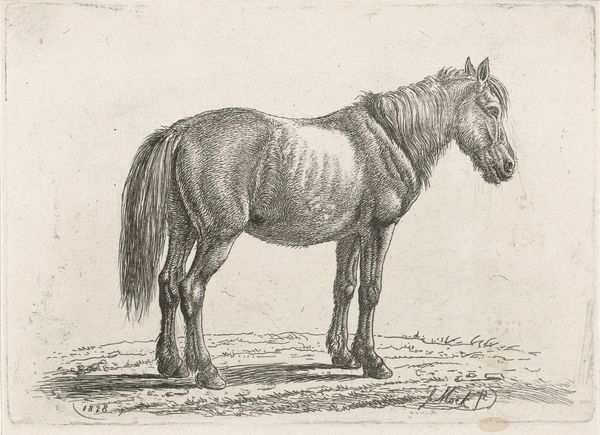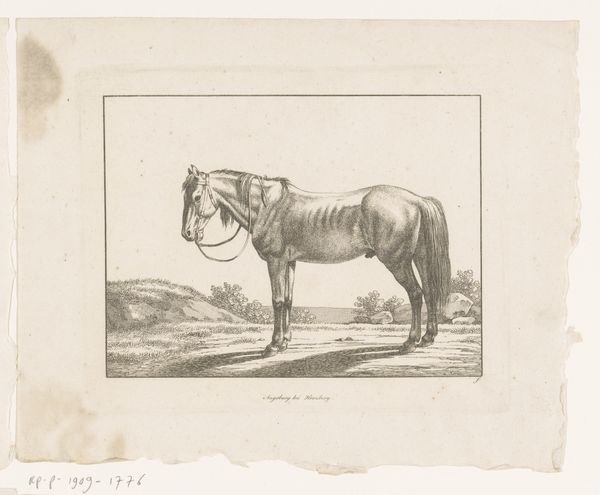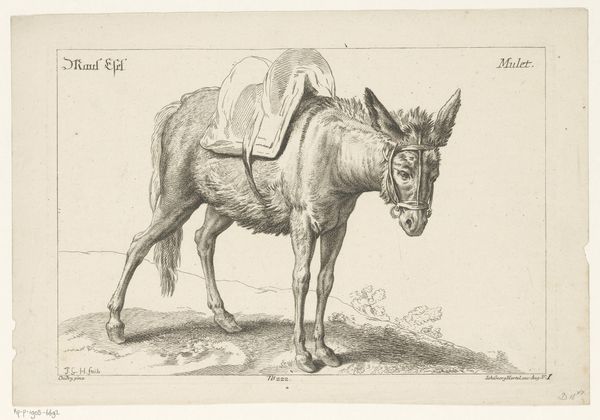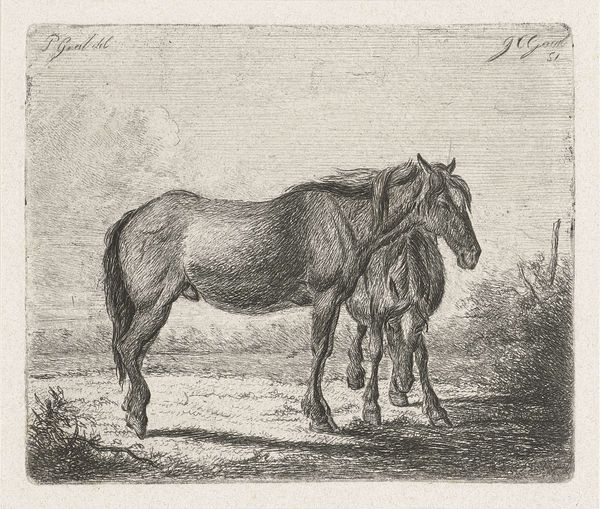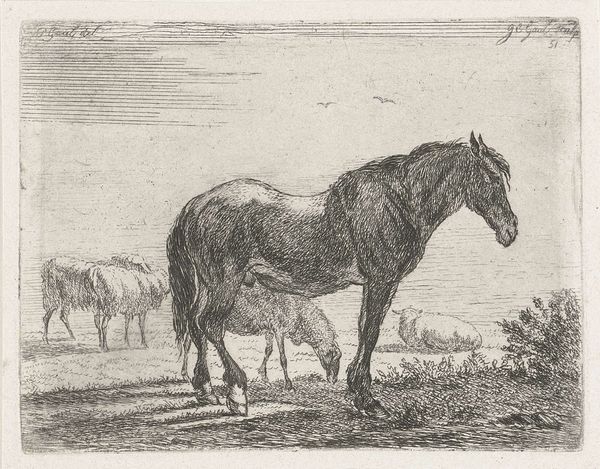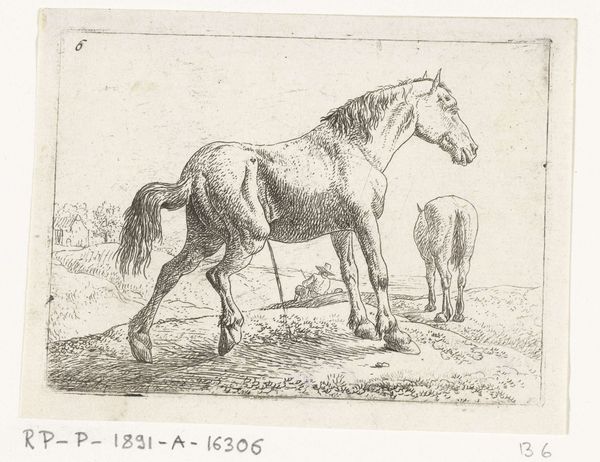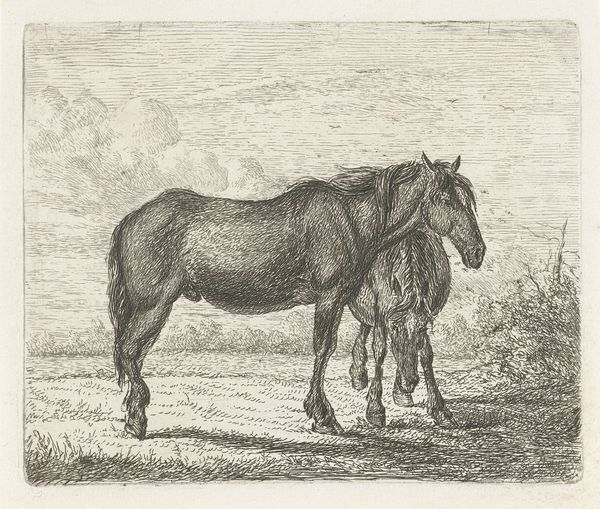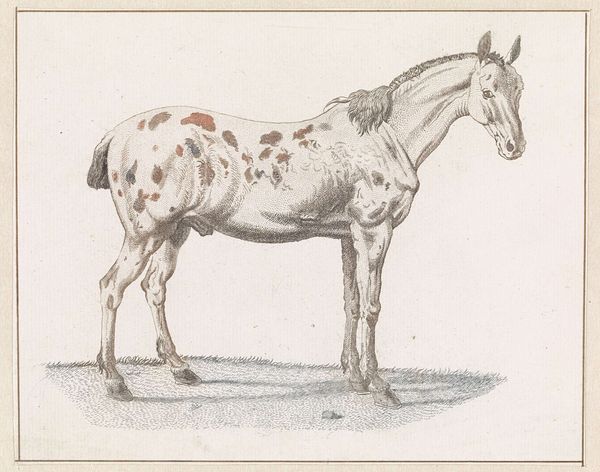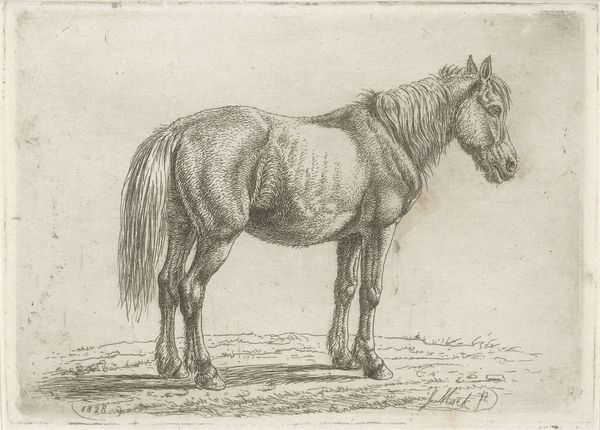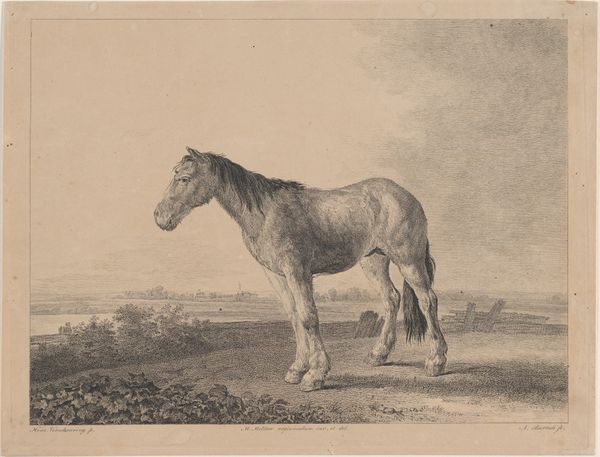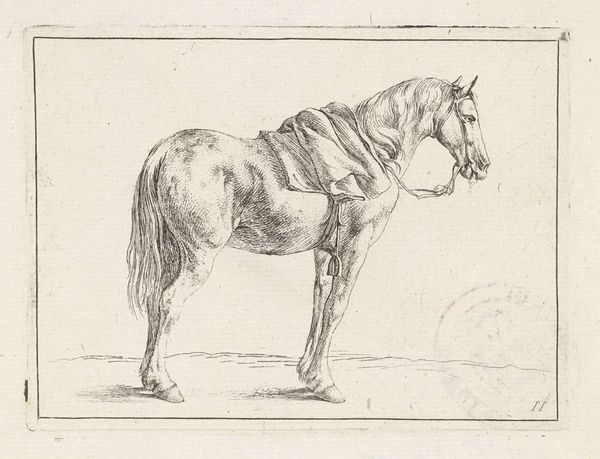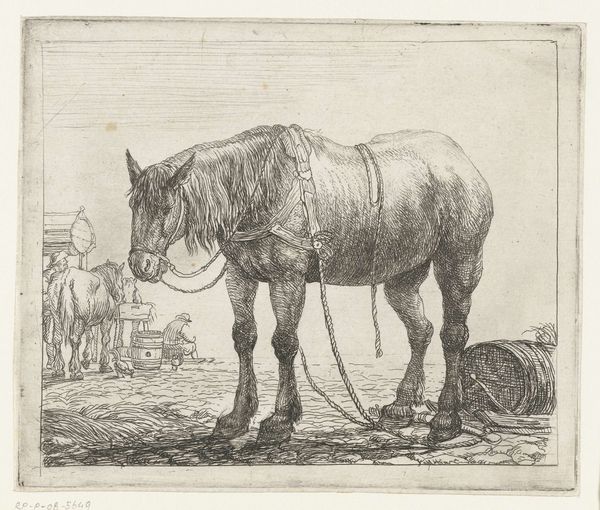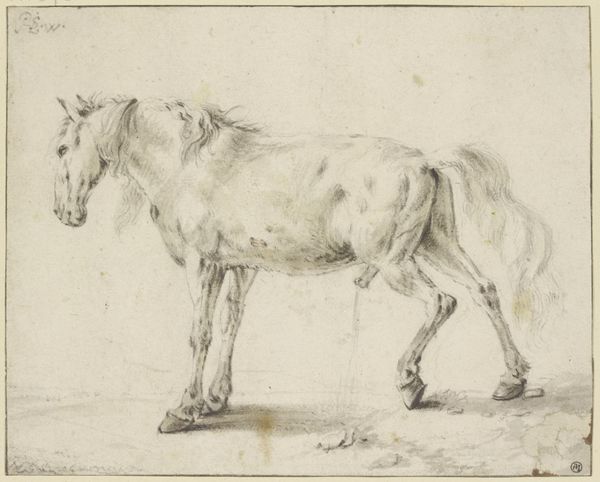
Dimensions: height 152 mm, width 204 mm
Copyright: Rijks Museum: Open Domain
This drawing of a horse was made by Hendrik Willem Schweickhardt in the late 18th century. During this time, the Netherlands was experiencing political and economic upheaval, and the art world was shifting from the opulence of the Rococo period to a more grounded Neoclassicism. Schweickhardt, who had a peripatetic career as a painter, here presents a somewhat forlorn image. The horse is thin, its ribs visible beneath its coat. The landscape is barren, reduced to a few tufts of grass and a dilapidated fence. This depiction might echo the lived experiences of many during this era, where social inequalities were stark, and the common person's labor often went unrewarded. Animals in art often symbolize aspects of human life. The condition of this horse—perhaps overworked, underfed—reflects a world where the lower classes, much like beasts of burden, bore the weight of society's demands. Looking at this drawing, one might reflect on the unseen toils that sustain us.
Comments
No comments
Be the first to comment and join the conversation on the ultimate creative platform.

